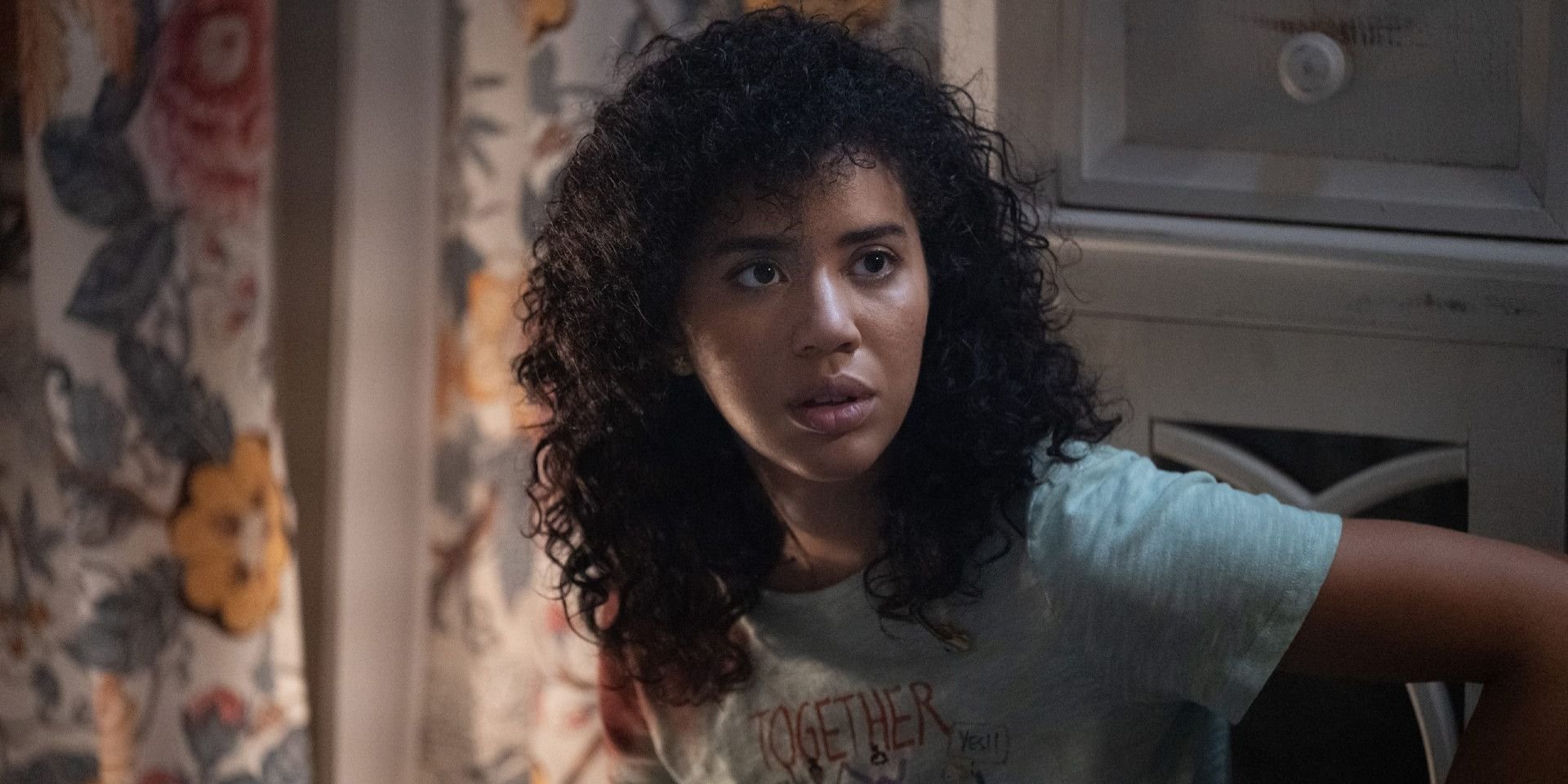[Pride 2022] Signed, Sealed Delivered: Asexuality and Horror
PLEASE CONSIDER DONATING TO THE GAYLY HELPFUL FUNDRAISER FOR THE TRANSGENDER LAW CENTER
The horror and science-fiction genres have been political and LGBTQ+ since their creation. Period. Signed, sealed, delivered.
Thank you, Mary Shelley.
One thing that the horror and science fiction genres offer to audiences more than other genres is a larger room for interpretations. While many of the stories in Rod Serling’s The Twilight Zone focus on social and political commentaries, they could also overlap with stories about LGBTQ+ lives. It’s all about your perspective and how you view the stories.
As for me and my perspectives- it’s been about a year now since I first identified myself as being on the asexual spectrum. It didn’t feel like there was one solid “Eurika!” moment but rather a series of me taking note about how I felt about things with partners past and present that involved sex. Years back when I first realized I wasn’t straight, I never actually felt like I was wrong until someone told me I was. Even then, I didn’t feel like I was a freak.
When I was first realizing I might be asexual, I did feel like a freak. I guess sometimes I still do. I’ve grown to accept my asexuality as a part of my queerness, but it’s still a process. Sex seems like such an integral part of life and society, no matter if you’re straight/gay/lesbian/bi/pan/queer, so it’s still easy to feel like more of an outsider when you look at sex and just feel “meh”.

So many horror stories use sex as a tool somehow. Randy’s rules in Scream say, “Sex equals death,” then he goes on to point out, “it’s a sin factor.” Sex is used to drive story plots a lot, be it the campy movie where the killer is waiting for the couple to be vulnerable mid-coitus or during the sweet, sweet afterglow or the naked girl running screaming from the monster or, more in a more serious way, the rape revenge subgenre. Sometimes it’s there as a joke and sometimes it’s there to address something more serious but, either way, starting around the 1970’s, sex was common in horror.
As far as sex and sexuality, we’re seeing more open LGBTQ+ creators and characters as the years go on. The standards for those characters are low, meaning that they’re not the butt of the jokes and they don’t die, but it’s a bar a lot of stories still fail to get over- looking over at Willow and Tara, to say the least. We only just got our first openly LGBTQ+ character in the Scream franchise and she lived (for now).

While there are a good handful of horror characters we can feel are asexual, there haven’t been any explicitly open asexual characters. Off the top of my head, I feel that Nancy of A Nightmare on Elm Street and Sidney of the Scream franchise could be asexual. And before you argue “Well, they both have kids so they must have had sex-” there are parents and married couples who are on the asexual spectrum. Meaningful relationships and marriages aren’t solely based on sex.
While those on the asexual spectrum might not crave sex, we crave the countless other forms of intimacy that aren’t sexual. Cuddling, sharing memes or inside jokes, sharing food or knowing someone’s favorite candy, and most definitely watching horror movies together.


![[Pride 2022] Signed, Sealed Delivered: Asexuality and Horror](https://images.squarespace-cdn.com/content/v1/5b39608d75f9eef54c62c3f0/1654779766958-LYN6R0LUUBSNA2IL44EB/image.jpg)
![[Pride 2022] Final Girl and Slasher?: The Complex Identities and Sexualities of Chucky's Nica Pierce](https://images.squarespace-cdn.com/content/v1/5b39608d75f9eef54c62c3f0/1656424689445-67KI2KU21YV2HU1A0G1F/usa-chucky-season-2-fiona-dourif.jpg)
![[Pride 2022] Out of Body Decay in High Tension](https://images.squarespace-cdn.com/content/v1/5b39608d75f9eef54c62c3f0/1656423799220-ITUBL9H28BZ9Y2RY6GYS/MARIE_%28HAUTE_TENSION%29.jpg)
![[Pride 2022] The Messy Queerness of What We Do in the Shadows](https://images.squarespace-cdn.com/content/v1/5b39608d75f9eef54c62c3f0/1656423105759-GQJ0JXQWEWIP7MAAV0Z4/wwdits_101_0800r.jpg)
![[Pride 2022] The Legacy of Sander Cohen and Queerness in Horror Games](https://images.squarespace-cdn.com/content/v1/5b39608d75f9eef54c62c3f0/1656342724783-0TNZGH5D8B7RZQVAZJ7U/Burial_at_sea_Cohen.jpg)
![[Pride 2022] The Historical Significance of Fear Street 1666](https://images.squarespace-cdn.com/content/v1/5b39608d75f9eef54c62c3f0/1656422353740-FHBWCZUFG6FE13AZRP6H/fear-street-part-3-1666-00-05-22-18r1-rgb.jpg)
![[Pride 2022] The Solace of Horror: Psycho IV and Me](https://images.squarespace-cdn.com/content/v1/5b39608d75f9eef54c62c3f0/1656342022957-BFL4A9657KNSOSB3YFS1/FFtpf18X0AU6Q3V.jpg)
![[Pride 2022] "You Smell Pretty": Satanic Lesbianism in 'The Blackcoat's Daughter'](https://images.squarespace-cdn.com/content/v1/5b39608d75f9eef54c62c3f0/1655999780945-TMYUH81TAEDNTFXFXRBP/maxresdefault.jpg)
![[Pride 2022] Growing Up With Carrie](https://images.squarespace-cdn.com/content/v1/5b39608d75f9eef54c62c3f0/1656000657372-YREKNOWC68RHBYJIX9PU/carrie_prom_1050_591_81_s_c1.jpg)
![[Pride 2022] In the Flesh -- The Gay Zombie Show You May Have Missed](https://images.squarespace-cdn.com/content/v1/5b39608d75f9eef54c62c3f0/1655756844372-J99TTD92DA6B3XR0OJF4/p01xg48r.jpg)
![[Pride 2022] Let Queer People Tell Queer Stories: An Interview with Director Sam Wineman ](https://images.squarespace-cdn.com/content/v1/5b39608d75f9eef54c62c3f0/1655758021833-LOXW71UHS1Q4G5SHQQ7P/SamWinemanHS.jpeg-1.jpg)
![[Pride 2022] Elden Ring Confirms that Fantasy is the Lands Between for Queer People](https://images.squarespace-cdn.com/content/v1/5b39608d75f9eef54c62c3f0/1655757640880-52S6WQI8MWUV59IWMCQ3/Elden-Ring-Turtle-Pope.png)
![[Pride 2022] Horror and the Power of Queer Pride](https://images.squarespace-cdn.com/content/v1/5b39608d75f9eef54c62c3f0/1655755026985-N9MF4ATJQ3B61LU5POE8/Bride-of-Chucky.jpeg)
![[Pride 2022] Swing Your Razor Right](https://images.squarespace-cdn.com/content/v1/5b39608d75f9eef54c62c3f0/1655759420489-Y7CAL2V1EHAYVVG4VYHR/Harry+3.jpg)
![[Pride 2022] IT’s Fine to Project Onto Your Favorite Characters; or Eddie Kaspbrak Isn’t Straight and Neither Am I](https://images.squarespace-cdn.com/content/v1/5b39608d75f9eef54c62c3f0/1655756285693-Q2PY24VXV63BBWSB4KGD/Eddie.jpg)
![[Pride 2022] Freddy Krueger's Christmas Sweater: On Kelly Rowland, cigarette emojis, and the American Flag](https://images.squarespace-cdn.com/content/v1/5b39608d75f9eef54c62c3f0/1655780859540-0L9SR4EF2IT93HWEEMJD/kelly-freddyvsjason1.jpg)
![[Pride 2022] "Was It Good For you, Too?" Queer Desire in Resident Evil: Revelations 2](https://images.squarespace-cdn.com/content/v1/5b39608d75f9eef54c62c3f0/1655687751962-3L6L4C8IOKLUSIQD1QHY/4e73157bd57a8c5848b2cc1ce0d9a7eb.png)

![[Pride 2022 Short Story] Worms](https://images.squarespace-cdn.com/content/v1/5b39608d75f9eef54c62c3f0/1655515137637-XSR8DEACPGV19O89L8DF/fishing-g93a06373c_1920.jpg)
![[Pride 2022] We Belong Dead; Universal's Frankenstein Through a Queer Lens](https://images.squarespace-cdn.com/content/v1/5b39608d75f9eef54c62c3f0/1655318372118-DJCL558DU68CG5U9KS1F/tumblr_58c180f2dbf1d5caefeec02820c0f1bf_72a1584c_540.jpg)
![[Pride 2022] There I Am.](https://images.squarespace-cdn.com/content/v1/5b39608d75f9eef54c62c3f0/1655317755613-A1H7MWFTP8U3Y9X70I2H/sofa-2.jpg)
![[Pride 2022] Finding Confidence Through Books and Films](https://images.squarespace-cdn.com/content/v1/5b39608d75f9eef54c62c3f0/1655079835120-I45ECYY7FUBPABM4BUPG/briefencounter1945.69696.1.jpg)
![[Pride 2022] Torture Porn and the Sexuality Spectrum](https://images.squarespace-cdn.com/content/v1/5b39608d75f9eef54c62c3f0/1654964838917-X44MEXIETY6TKAVMQYT8/1+HdYaga2ysd2cAOdUyJ85Gg.jpeg)
![[Pride 2022] Comfort in the Grotesque: A Queer Take on Body Horror](https://images.squarespace-cdn.com/content/v1/5b39608d75f9eef54c62c3f0/1655078139527-8HHFBMPY4HUXKO1W0B6J/vlcsnap-2011-12-30-07h42m32s88.png)
![[Pride 2022] The Blob is Non-Binary: Change My Mind](https://images.squarespace-cdn.com/content/v1/5b39608d75f9eef54c62c3f0/1654960976783-EQ472JWBNZ4GAP4LJ4BH/blob-58-2.jpg)
![[Pride 2022] Let it Play: How Horror Helped me Face my Intrusive Thoughts](https://images.squarespace-cdn.com/content/v1/5b39608d75f9eef54c62c3f0/1654961575027-75HVJMCAR65JBQ5O9WP3/386d170d5537059388fe67380dd23318.jpg)
![[Pride 2022] The Bisexual Subtext of Stu Macher](https://images.squarespace-cdn.com/content/v1/5b39608d75f9eef54c62c3f0/1654959612093-ZILQ33GYM1W839VDY41V/1.-Matthew-Lillard.jpg)
![[Pride 2022] 'In The Flesh': A Dissection of Queer Identity](https://images.squarespace-cdn.com/content/v1/5b39608d75f9eef54c62c3f0/1654779394348-WX45EEYMOWUVG3O5IT26/p01xklcs.jpg)
![[Pride 2022] The Incessant Conformity of 'Vivarium' (2019)](https://images.squarespace-cdn.com/content/v1/5b39608d75f9eef54c62c3f0/1654638468146-8RYS4POJAXP51RF4ZPXK/vivarium-bed.jpeg)
![[Pride 2022 Interview] Never Sleep Again: An Interview with Dead Sled’s Diana Whittles](https://images.squarespace-cdn.com/content/v1/5b39608d75f9eef54c62c3f0/1654565710056-IHQ50GE3S7B9Q1CFNNZ5/Screenshot+2022-06-06+at+20-34-55+About+Us+About+Dead+Sled+Coffee+%26+Mission+Statement.png)
![[Pride 2021] Scream Queens and Questioning Teens](https://images.squarespace-cdn.com/content/v1/5b39608d75f9eef54c62c3f0/1624149197362-IF9TOXOTVDH8CVP8RU39/294658a8bdb5132709cda29ccffe02e84e42026682cf54c14ea4db9fa7346aff._RI_.png)